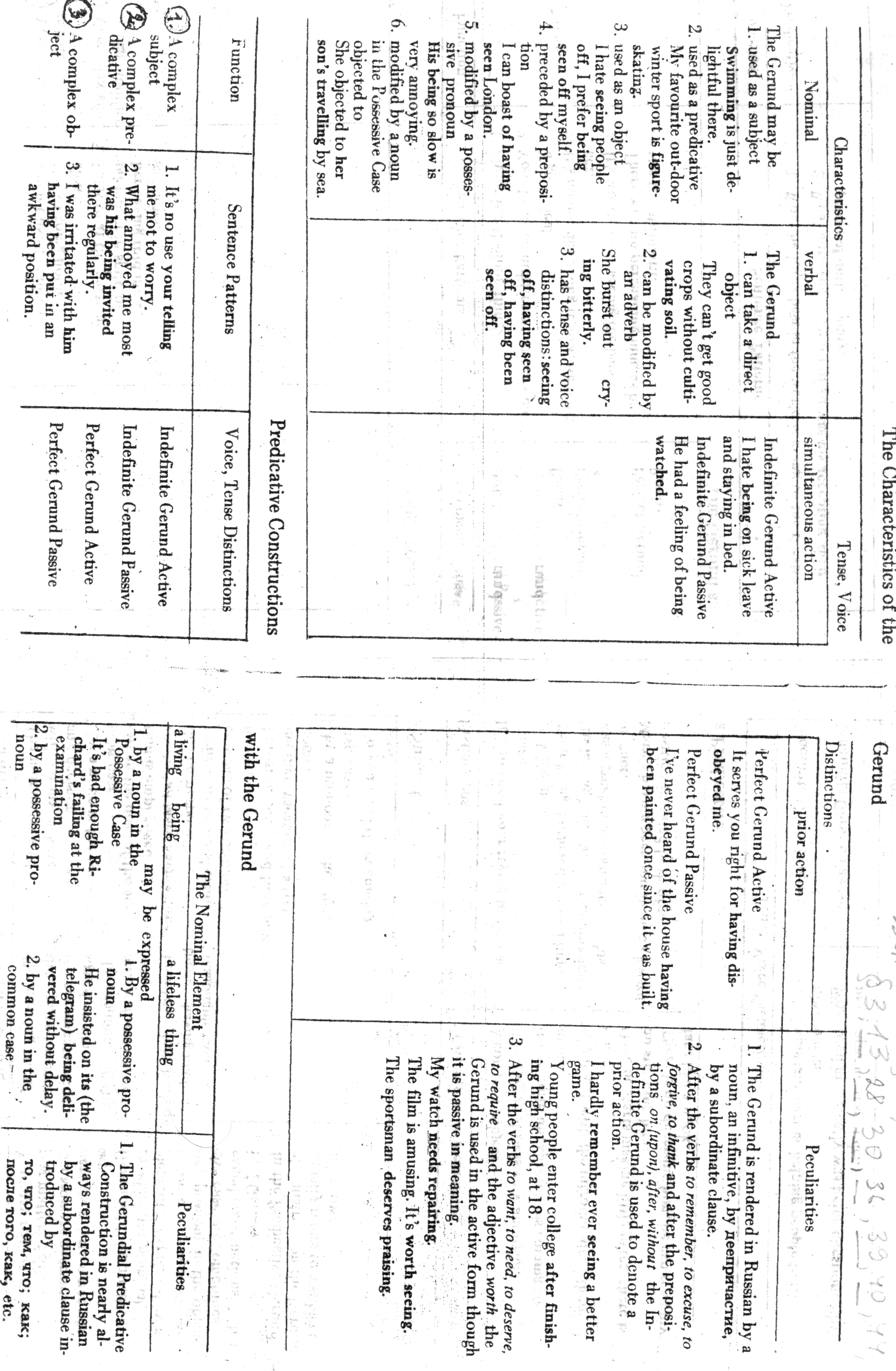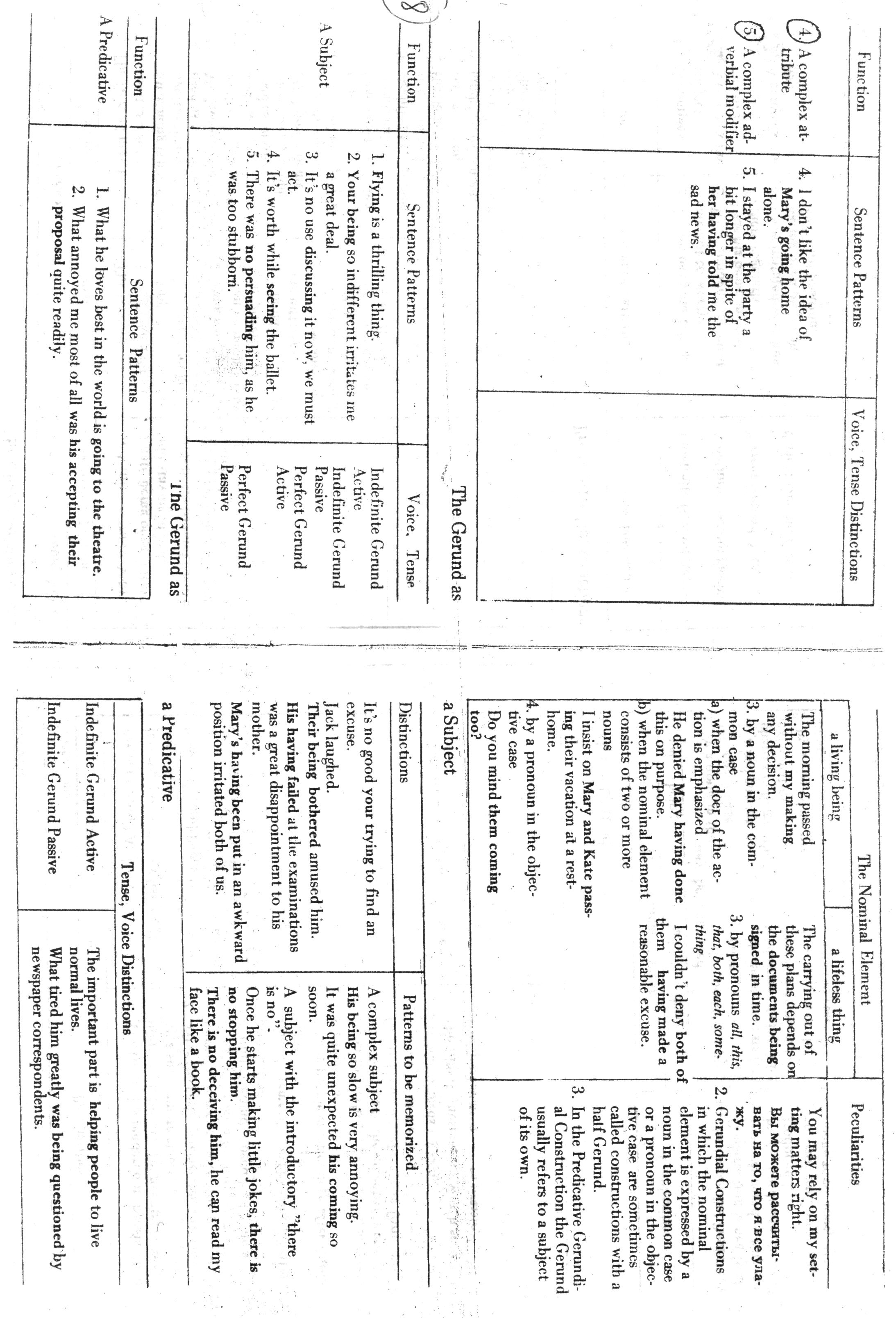
- •Plan of your answer:
- •Functions of the gerund
- •The Gerund
- •The Grammatical Categories of the Gerund
- •The Forms of the Gerund The Category of Correlation (perfect – non-perfect)
- •The Category of Voice (active – passive)
- •Syntactical Functions of the Gerund
- •The Gerund as Subject
- •The Gerund as Object
- •The Gerund as Attribute
- •The Gerund as Adverbial Modifier





Plan of your answer:
-
The Gerund is a non-finite form of the verb formed by adding the suffix –ing to the stem of the verb …
-
nominal characteristics
-
-
-
-
-
-
-
-
-
-
-
-
-
-
verbal characteristics
-
-
-
-
-
-
-
-
-
The forms of the gerund …
-
to denote simultaneous action we use …
-
to express prior action we use …
-
But : after the verbs … ( 4 verbs) …and after the prepositions …(4 prep) … the gerund indefinite is used to denote a prior action.
-
-
The gerund can be used in the following functions:
Functions of the gerund
The gerund is used as:
-
Subject.
-
In front (initial) position.
-
Eg. Smoking is bad for you.
-
The subject can be introduced by the introductory (anticipatory) “it” . With expressions like: It’s no use/good, it’s (not) worth, to make all (the/no)difference …
Eg. It’s no use crying over spilt milk.
-
With the introductory “there” +negative pronoun “no”. Such sentences are usually emphatic.
Eg. There’s no point in going there. There’s no accounting for tastes.
-
Part of a compound predicate:
-
Compound nominal predicate (predicative)
-
Eg. All he wanted was leaving the place at once. (was leaving – predicate, leaving – predicative)
-
Compound Verbal Aspect(phrasal) Predicate with the verbs of beginning, duration and completion of the action (begin, star, burst out, go on, finish, give up)
Eg. She burst out laughing.
-
* Some specialists distinguish a Compound verbal modal predicate with the expressions “can’t/couldn’t help +ing”
Eg. She couldn’t help laughing.
N.B! Others regard the following case an object.
-
Object.
-
A direct object
-
-
After a number of verbs which are followed only by the Gerund (admit, avoid, deny ..)
-
After some verbs which are followed either by the Gerund or the Infinitive without much change in the meaning. (begin, start, continue …)
-
After a number of verbs which are followed either by the Gerund or the Infinitive with the change in the meaning. (stop, regret, remember, forget …)
As prepositional object the gerund may follow after:
-
Prepositional verbs (to agree to, consist in, think of, rely on, succeed in …)
-
Verbs taking direct and indirect object (accuse of, suspect of, prevent from, thank for)
-
Adjectives and statives (to be afraid of, to be capable of, to be fond of, to be sure of ..)
-
Participle II (be used to, accustomed to, tired of, surprised at …)
Attribute. When used as attribute, the Gerund modifies
-
Abstract nouns.
Eg. He missed his chance of being promoted.
-
Concrete nouns preceded by the preposition “for”
Eg. The barometer is an instrument for measuring the pressure of the air.
-
Adverbial modifiers:
-
Of time often used with prepositions on, after, in, before, since. (Eg. After thinking it over he accepted the offer.)
-
Of reason (because, of, for, from, for fear of, on account of)
-
Of manner and attendant circumstances. They danced without making a sound.
-
Concession (in spite of)
-
Condition (without, but for, in case of)
-
Purpose
-
N.B! some more information p136 VERBALS
